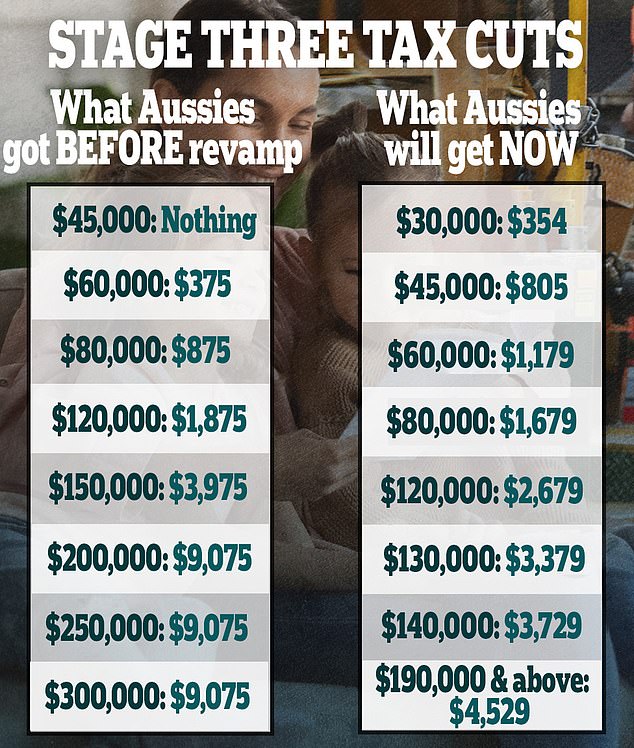Big bank reveals how the super rich are set to slash their tax bill – and why Anthony Albanese is to blame
Anthony Albanese’s decision to leave the wealthy out of phase three tax cuts will encourage them to increase their pension benefits and cut their salaries to minimize their tax burden, Westpac banking analysts predict.
Labor amended the former coalition government’s third stage tax cut plan, deciding to keep, rather than scrap, the 37 percent marginal tax band for those earning between $135,000 and $190,000.
The Albanian government’s changes will also see the top 45 percent tax bracket increase to $190,000 from $200,000.
The changes were passed by parliament in February with support from the opposition.
That means the top three percent of earners with incomes of $200,000 or more will see their tax bill drop by just $4,529 starting July 1, 2024, instead of $9,075 under the original plan.
The changes were intended to provide more tax relief to lower and middle income earners.
But if the government thought the two measures – bigger tax cuts for middle and low earners and smaller tax cuts for the wealthy – would balance each other out in terms of revenue, economists disagree.
Anthony Albanese’s changes to the third phase of tax cuts will encourage wealthier people to put their money into pensions to minimize their tax burden, says the Westpac bank (The Prime Minister is pictured on the right with this fiancee Jodie Haydon)
Westpac senior economist Jarek Kowcza said high-income earners will instead put more of their salary into the pension, which is taxed at 15 percent instead of 45 percent.
“Higher income earners will have more incentive to contribute to pensions to reduce their tax bill than under the old package,” Kowcza said.
“They could result in the benefits of tax breaks for pensions accruing even more to higher earners than is currently the case or would have been the case under the previously adopted package,” he said.
A Westpac analysis of 2020-2021 tax authorities data, the most recently available, found that those earning more than $128,100 received 40 per cent of all tax benefits for super contributions.

The changes were intended to provide more relief to lower- and middle-income earners, but the tax changes in phase three could result in more tax breaks of a different kind flowing to the wealthy (pictured is a stock photo)

More than half, or 55 per cent, who took advantage of favorable super tax rates earned more than $95,000, which was slightly above the average full-time salary at the time.
The Treasury’s Tax Expenditures and Insights Statement for 2023-2024 predicts that tax breaks for pensions will cost the budget $50 billion in lost revenue in 2024-2025.
From July 1, 2025, the favorable tax rate for super contributions will double to 30 percent for the 80,000 individuals with a balance of more than $3 million, or 0.5 percent of the population.
This measure is intended to save $2 billion per year.
Mr Kowcza said the changes in the third phase of the tax cut, and the resulting accumulation of money in lightly taxed pensions, could create political pressure to tax these contributions at a similar level to the salaries of middle and lower income earners .

Labor has amended the former Coalition government’s phase three tax cut plan to retain rather than scrap the 37 per cent marginal tax band for those earning between $135,000 and $190,000.
“One thing these changes can do is contribute to the growing community discussion about the sustainability of Australia’s tax and transfer system, including its superannuation tax institutions,” Kowcza said.
At the low end of the scale, 4,385,353 individuals or 29 percent of taxpayers earning $18,200 to $45,000 will benefit from their marginal tax bracket dropping to 16 percent, down from 19 percent as part of the third phase of the tax cuts.
Someone with an income of $45,000, now less than the full-time minimum wage, would get $805 back instead of nothing.
A below-average income earner making $80,000 would get back $1,679 instead of $875.
